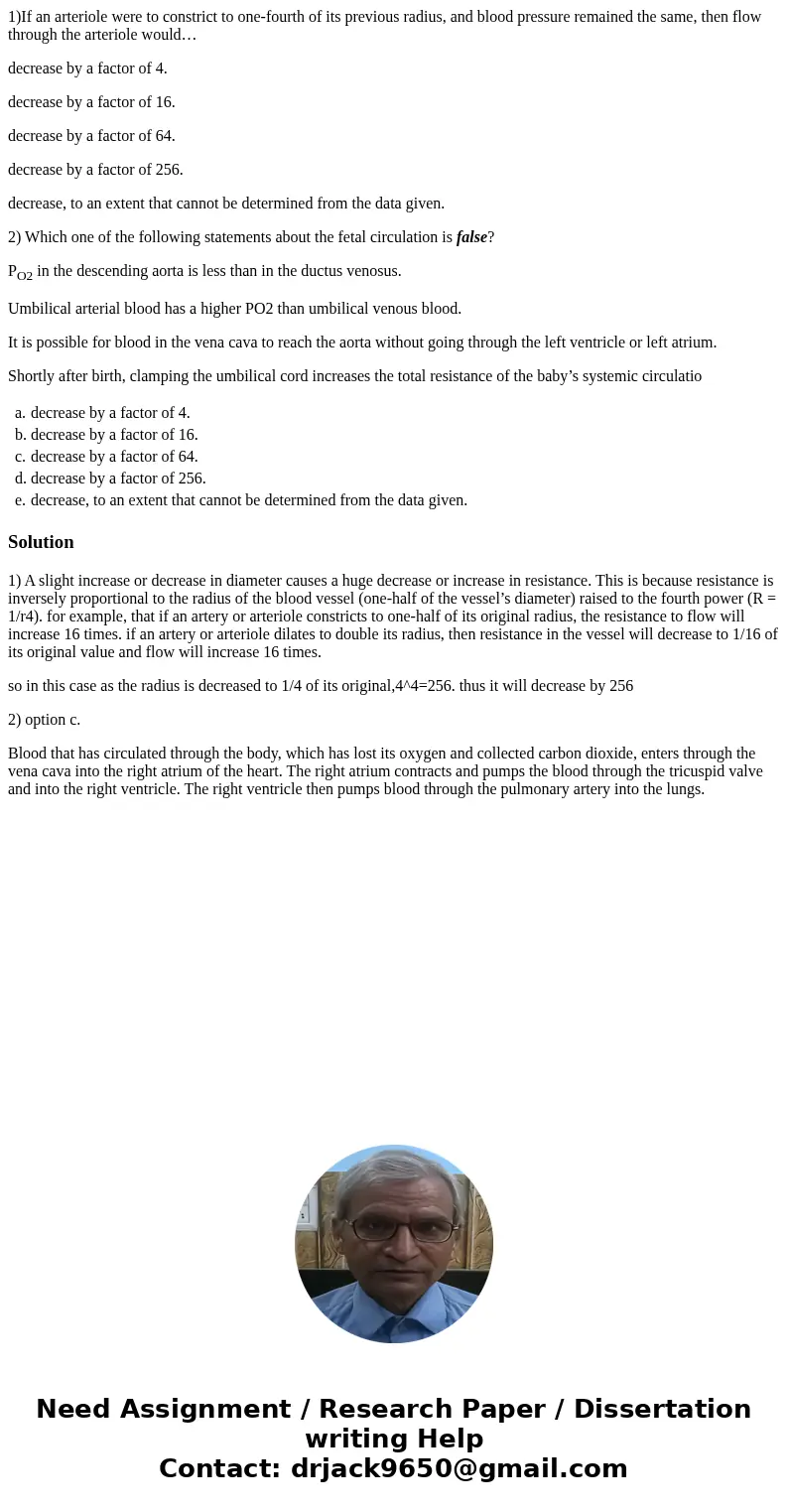1If an arteriole were to constrict to onefourth of its previ
1)If an arteriole were to constrict to one-fourth of its previous radius, and blood pressure remained the same, then flow through the arteriole would…
decrease by a factor of 4.
decrease by a factor of 16.
decrease by a factor of 64.
decrease by a factor of 256.
decrease, to an extent that cannot be determined from the data given.
2) Which one of the following statements about the fetal circulation is false?
PO2 in the descending aorta is less than in the ductus venosus.
Umbilical arterial blood has a higher PO2 than umbilical venous blood.
It is possible for blood in the vena cava to reach the aorta without going through the left ventricle or left atrium.
Shortly after birth, clamping the umbilical cord increases the total resistance of the baby’s systemic circulatio
| a. | decrease by a factor of 4. | |
| b. | decrease by a factor of 16. | |
| c. | decrease by a factor of 64. | |
| d. | decrease by a factor of 256. | |
| e. | decrease, to an extent that cannot be determined from the data given. |
Solution
1) A slight increase or decrease in diameter causes a huge decrease or increase in resistance. This is because resistance is inversely proportional to the radius of the blood vessel (one-half of the vessel’s diameter) raised to the fourth power (R = 1/r4). for example, that if an artery or arteriole constricts to one-half of its original radius, the resistance to flow will increase 16 times. if an artery or arteriole dilates to double its radius, then resistance in the vessel will decrease to 1/16 of its original value and flow will increase 16 times.
so in this case as the radius is decreased to 1/4 of its original,4^4=256. thus it will decrease by 256
2) option c.
Blood that has circulated through the body, which has lost its oxygen and collected carbon dioxide, enters through the vena cava into the right atrium of the heart. The right atrium contracts and pumps the blood through the tricuspid valve and into the right ventricle. The right ventricle then pumps blood through the pulmonary artery into the lungs.

 Homework Sourse
Homework Sourse